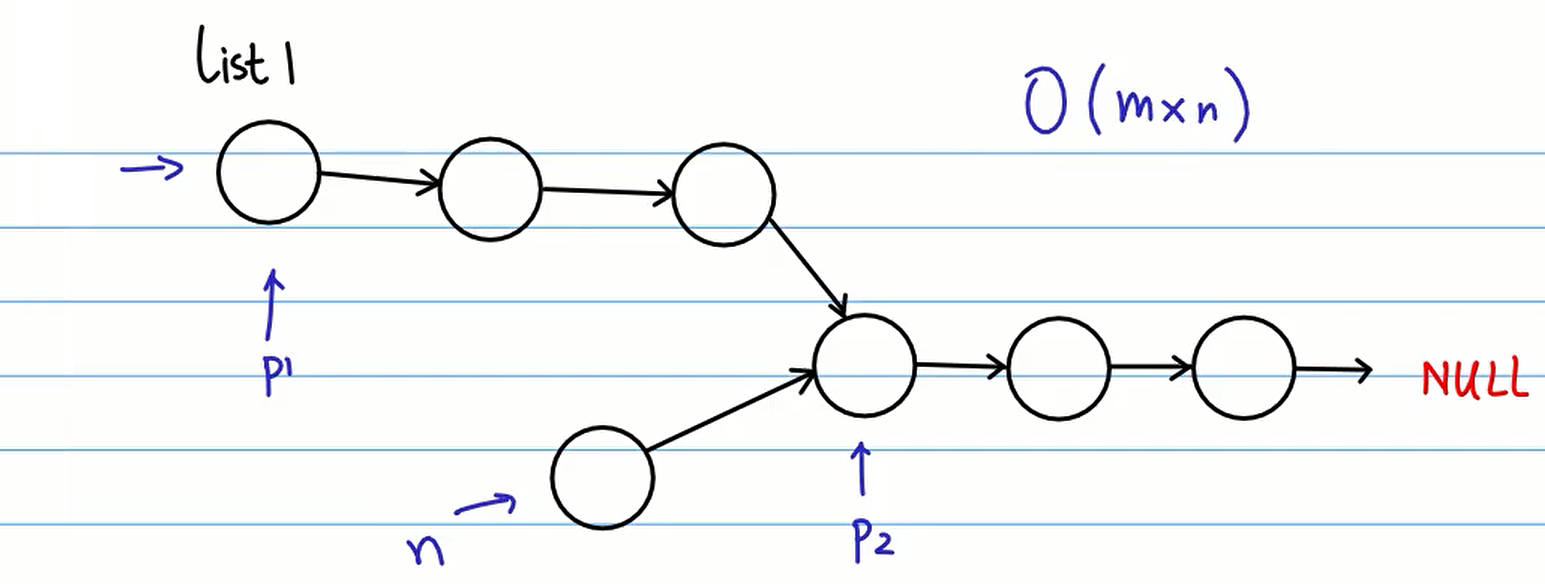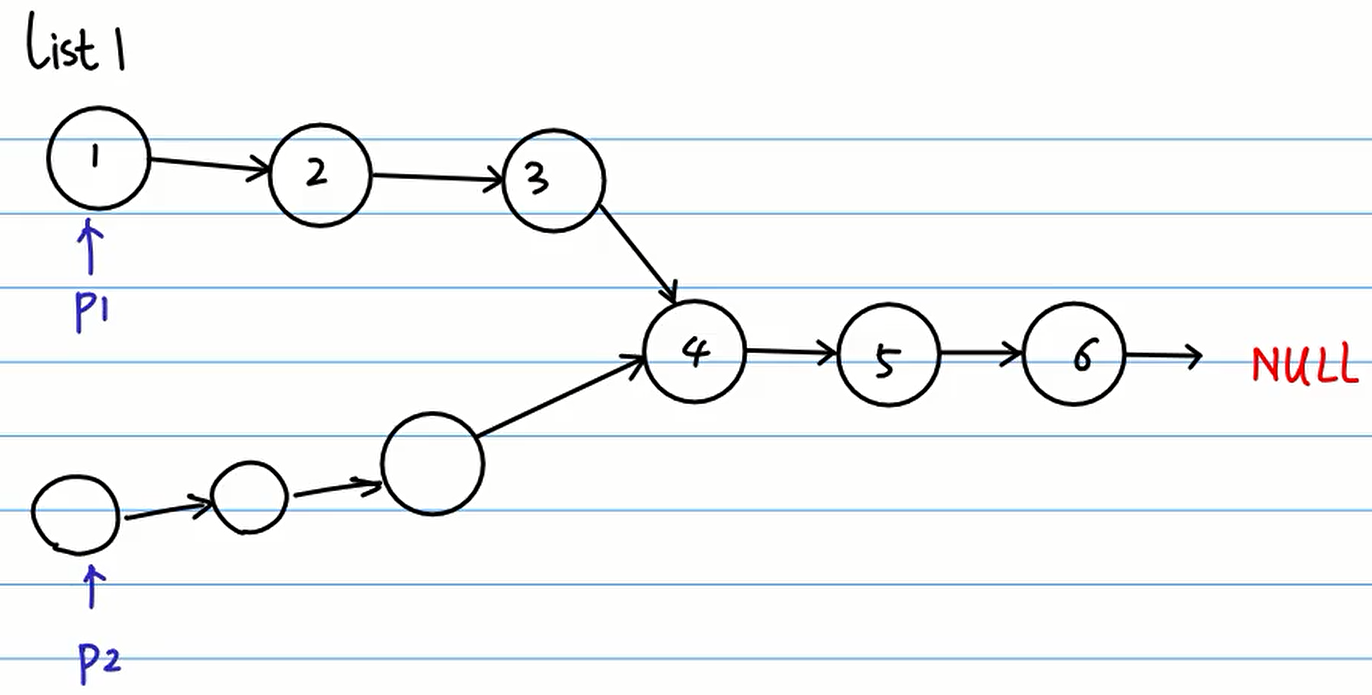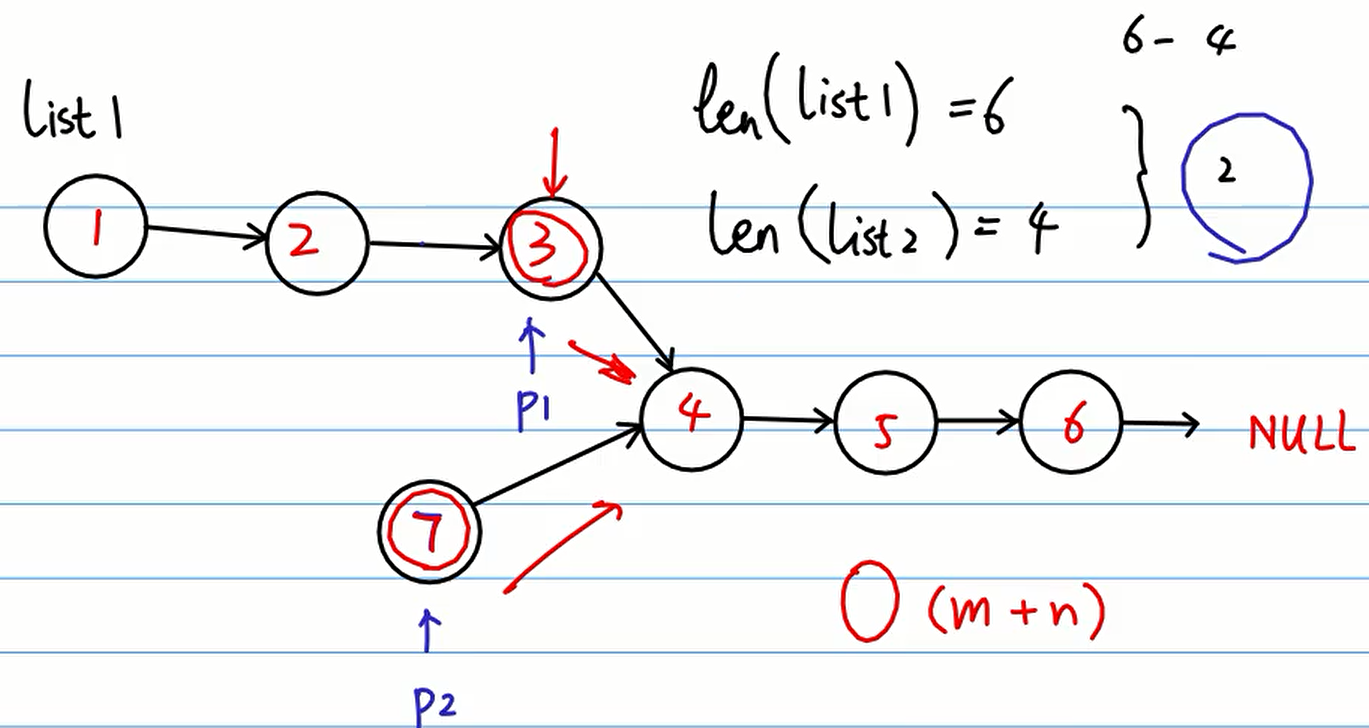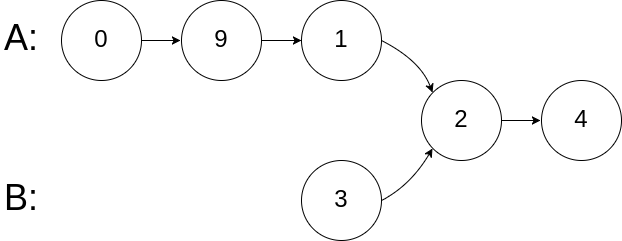思路
L1和L2的数据举例如下:
L1: 1 -> 2 -> 3 -> 4 -> 5 ->6 L2: 7 -> 4 -> 5 -> 6
接下来,我们来分析这个链表问题,其实所有的链表问题都是玩指针。我们先来看看最容易想到的暴力法求解,然后对其进行改进。
方法1: 暴力法
用两个指针p1, p2,都从头开始走,按题意两指针肯定在某一位置相遇,该方法的时间复杂度为O(m*n)。

那有没有更快的方法,找到这个点呢?
假如两个链表一样长,那么两个指针同步向前走,第1次汇合时就找到了。

现在遇到的问题是,我们不知道这两个链表的长度,更一般的情形是两个长度不一样,长度差记为 gapLen。此时如果两个指针都从头同步走,必然会丢失一些点,且两指针很有可能无法相遇(错过汇合的那个节点)。那对此有什么办法呢?
方法2: 让较长的链表先走 gapLen 步,接下来两个指针同步向前走
分别遍历1次链表L1 和 L2, 得到长度len1和len2, 记作长度差gapLen = abs(len1 - len2)。
假如我们让较长的链表先走 gapLen 步,接下来两个指针同步向前走,那么在第1次汇合时就能找到了。这就是目前最好的思路了,时间复杂度降为 O(m+n)。

代码(方法2)
实现语言: C++
class Solution {
public:
ListNode *getIntersectionNode(ListNode *headA, ListNode *headB)
{
if (headA == NULL || headB == NULL)
return NULL;
int len1 = getLen(headA);
int len2 = getLen(headB);
// 较长链表的head指针先移动 gapLen 个位置
int gap = abs(len1 - len2);
if (len1 >= len2)
{
while (gap--)
headA = headA->next;
}
else
{
while (gap--)
headB = headB->next;
}
// 指针headA 和 headB同步向前移动,遇到相同则直接返回
while (headA != NULL) {
if (headA == headB) {
return headA;
}
headA = headA->next;
headB = headB->next;
}
return NULL;
}
int getLen(ListNode *head)
{
int count = 0;
ListNode *p = head;
while (p != NULL)
{
count++;
p = p->next;
}
return count;
}
};代码已上传到: leetcode-ac/91algo daily - github.com
复杂度分析
- 时间复杂度:O(m+n)
- 空间复杂度:O(1)
ps: 之前用C# 写了一次这个题的题解, 发表在力扣题解区 .




160. 相交链表
入选理由
暂无
题目地址
https://leetcode-cn.com/problems/intersection-of-two-linked-lists/
前置知识
题目描述